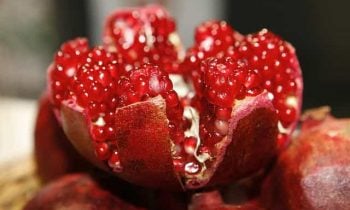1. Make a commitment to juicing and stick to it, this can be tricky if you are not used to the practice but with time, dedication and regular use it can become so deeply embedded that it will simply be something you won’t want to live without. It can take several weeks to form a solid juicing habit, so stick with it and make sure to juice regularly.
2. Create a juicing schedule. Make plans depending on how much your juicer can juice at one time, how much prep is necessary for produce, and how much time you can dedicate each day or every other day to be sure that you have fresh juice available at all times.
3. Stick with a regular juicing schedule to support the habit. Studies show that consumption of large doses of specific vitamins, minerals, and enzymes can aid in the prevention and management of symptoms associated with heart disease, cancer, and strokes and can strengthen immunity against colds and flu, increase bone density and improve the condition of the skin. We know that studies have shown that it is recommended that we consume six to eight servings of vegetables and fruits daily. This can be challenging for many people, juicing ensures that you reach the recommended daily intake for vegetables in a convenient manner.
4. Buy a quality juicer – many vegetables, like beets and carrots, are actually quite difficult to pulverize properly, and cheap juicers will not do the job. Buying a juicer that is powerful enough to pulverize efficiently and rapidly is one of the keys to buying a great juicer. If you plan to juice a lot of hard vegetables, your best choice is a centrifugal juicer.
5. If you plan to juice mostly greens, then consider a masticating juicer that is great for greens and also supplies a high juice yield.
6. Consider the size of the mixing container. If you go too small, you’ll only be able to juice a little at a time, so make sure you invest in a unit that has the capacity for your juicing needs. This is especially important for large families.
7. Keep a produce shopping list to stay organized and have all the ingredients you need at hand when you want to juice.
8. If you plan to juice in the morning then prep your produce as needed the night before. This is especially useful when your mornings are rushed or time limited.
9. Always wash produce thoroughly to eliminate all dirt particles, and some of the pesticides when not buying organic produce. This is especially important with leafy greens where dirt hides between the leaves.
10. Line your juicer’s pulp basket with a plastic bag for easy clean up.
11. Juice every day to build a healthy habit. When daily juicing is not possible, you can store juice in the fridge in an airtight container for up to 3 days.
12. Juice vegetables that you do not normally eat. Every vegetable provides a different benefit to the body but everyone is different in terms of what vegetables they enjoy eating, and so they skip those they don’t like due to either taste, smell or texture. Juicing these allows you to obtain benefits from vegetables that you would not ordinarily consume, and since you can mask their taste with fruit, lemons, ginger and other enhancers getting these nutrients becomes much less of a burden.
13. Consider sugar content of fruits when you juice, as some have so much sugar they should be consumed in moderation or avoided altogether, especially for those who need to avoid spikes in blood sugar levels (diabetics), those with weight issues, and definitely those who are juicing for weight loss.
14. Taste as you go and adjust accordingly, just as you would during cooking.
15. Consuming juices first thing in the morning or at any time when your stomach is empty will optimize the rate at which the vitamins, minerals, antioxidants, and enzymes are absorbed and used by the body. It also gives you a great energy boost to kick-start your day with the drive you need. Additionally, consuming raw fruit and vegetables provides an intensive boost of vitamins and enzymes, which are directed straight to the blood stream. This means that your digestive system does not need to process the fruit and vegetables as they would if you were to consume them whole.
16. Juice high water vegetables, like cucumbers and broccoli. People often struggle with reaching the recommended daily intake of water. With six to eight glasses being the goal, some find it difficult to reach this intake. Many juicing combinations incorporate an element of water as the basis for the recipe, and indeed many vegetables and fruits have a high water concentration, meaning that you are extracting water during the juicing process. Juicing provides a great strategy for increasing your water intake each day to hydrate your body.
17. Make sure to juice vegetables with fruit. If you only consume fruit based juices, your intake of sugar and calories will be unnecessarily high. By integrating vegetable juicing into your daily diet, you will be able to optimize the volume of vitamins, minerals, antioxidants, and enzymes being absorbed by your body.
18. Make sure that you follow the 80/20 rule when it comes to the ratio of vegetables to fruit. 80% vegetables that will give you the immunity, wellness, and energy boost you need and 20% fruit for more nutrients and taste. So, add an apple to give some sweetness or an orange if you crave some zesty citrus flavor.
19. Make sure that you include one or two root vegetables in your juicing combination. By adding in a carrot or beet into your recipe, you will be able to give the juice an intense boost of antioxidants, while also gaining a sweet but earthy flavor, which makes it more palatable when drinking.
20. To optimize the nutritional properties of your juice you need to ensure that you include a minimum of at least, one leafy green vegetable such as kale, broccoli, or chard, which will give you an enormous amount of unique nutrients.
21. High water content vegetables such as a cucumbers or celery will assist in diffusing the very (and sometimes overpowering) flavors of kale, broccoli, or chard, which help to ensure that the juice you prepare is easy to drink.
22. Add some kind of garnish to not only provide a concentrated and intensive vitamin boost but also to make the juice really tasty. Great options include, ginger, lemons, limes or mint.
23. Re-juice any still wet pulp to get the most bang for your juicing buck.
24. Juice to improve the aging process – as we age our ability to digest what we need can become impaired as our organs work less optimally. By preparing food in this liquid and raw form, it becomes “pre-digested” which means that the body can absorb the vitamins, minerals, antioxidants and enzymes quickly and most efficiently.
25. Juicing fruit alone greatly increases your sugar intake, which can lead to weight gain and erratic blood sugar spikes that actually stimulate hunger, negating the positive benefits that juicing offers.


 Diabetes Treatment & Prevention
Diabetes Treatment & Prevention 5 Healthy Habits
5 Healthy Habits Aging too Fast?
Aging too Fast? Is Coffee Bad for You?
Is Coffee Bad for You? Natural Remedies
Natural Remedies